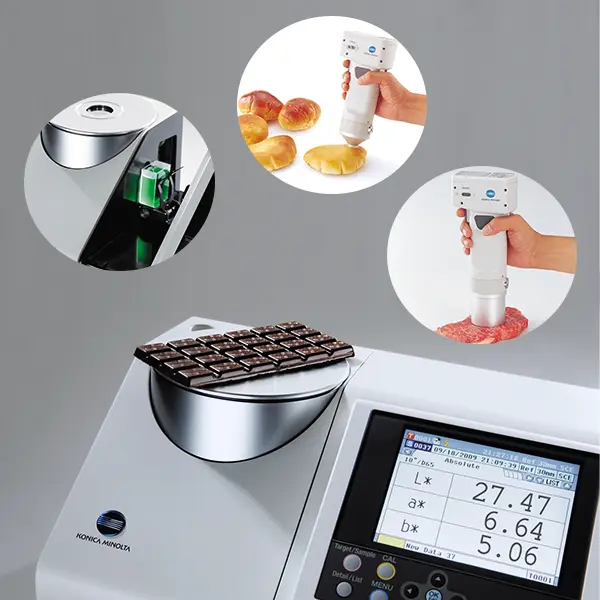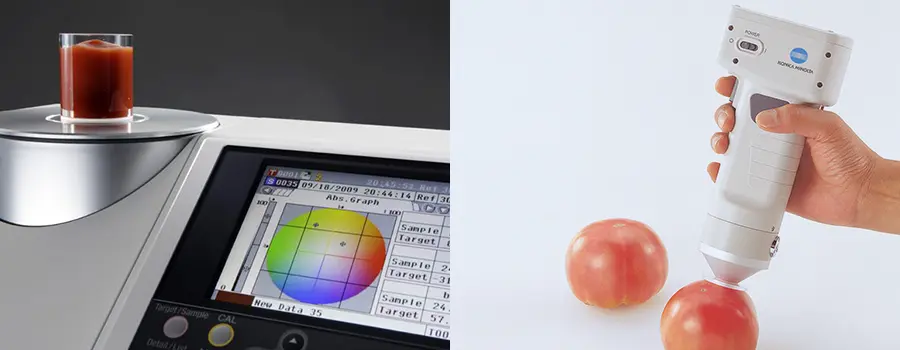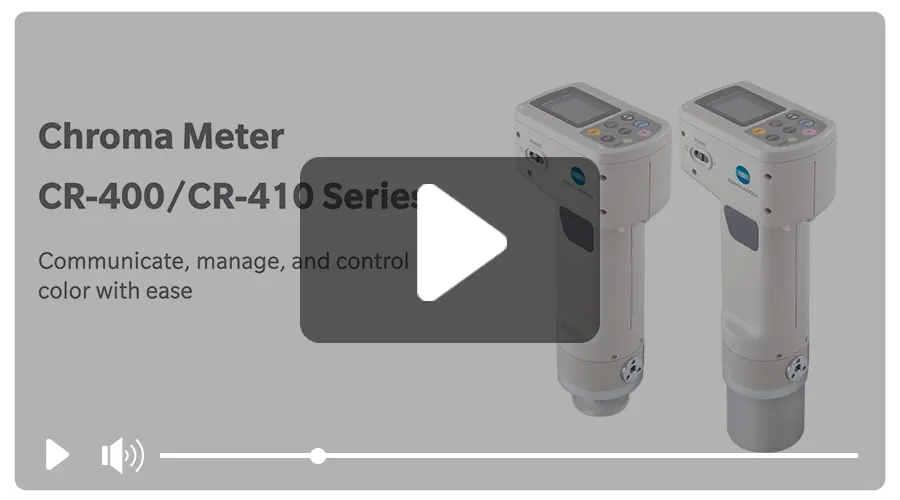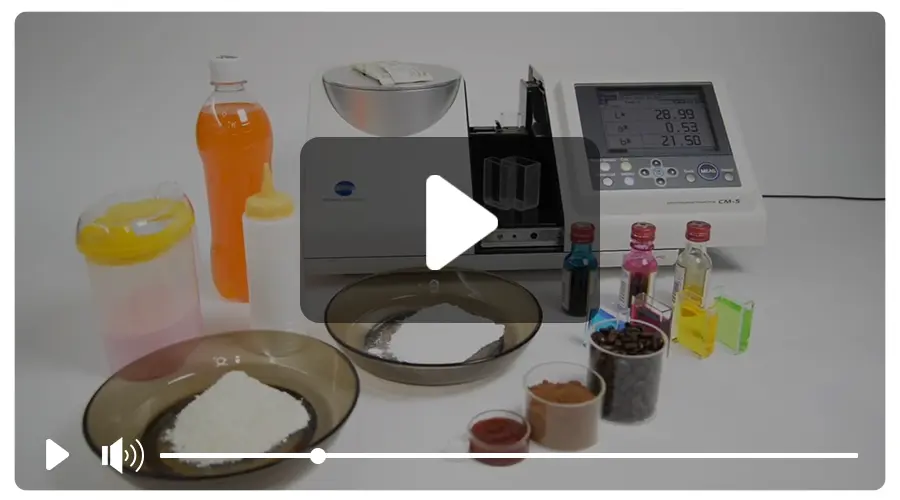Dari Ladang ke Meja: Pengukuran Warna yang Akurat dalam Industri Makanan

Pengukuran warna makanan merupakan aspek penting dari pengendalian mutu dan pengembangan produk dalam industri makanan. Warna makanan tidak hanya memengaruhi persepsi dan penerimaan konsumen, tetapi juga berfungsi sebagai indikator penting kesegaran, kematangan, dan potensi pembusukan. Misalnya, warna cerah pada buah dan sayuran sering kali menandakan kematangan optimal, sedangkan warna kusam atau tidak menarik dapat menunjukkan bahwa suatu produk mungkin sudah melewati masa jayanya. Selain itu, mempertahankan warna yang konsisten di seluruh kelompok dapat membantu membangun kredibilitas di antara konsumen, karena orang sering kali mengaitkan warna tertentu dengan rasa dan tingkat kualitas tertentu. Melalui pengukuran warna yang tepat, produsen makanan dapat memastikan produk mereka memenuhi standar industri dan harapan pelanggan mereka.
Metode Pengukuran Warna Makanan
Ada beberapa metode untuk mengukur warna makanan, masing-masing memiliki tingkat presisi yang berbeda-beda. Metode yang paling mendasar adalah penilaian visual, yang mengandalkan mata manusia untuk mengevaluasi warna. Meskipun pendekatan ini cepat dan murah, pendekatan ini sangat subjektif dan dapat menyebabkan ketidakkonsistenan karena kondisi pencahayaan yang berbeda-beda dan perbedaan persepsi individu.
Pendekatan yang lebih akurat adalah melalui penggunaan instrumen pengukuran warna. Instrumen ini, seperti kolorimeter atau spektrofotometer, menggunakan prinsip-prinsip ilmiah untuk mengukur warna dan memberikan pengukuran yang objektif Umumnya digunakan dalam industri makanan untuk memastikan konsistensi dalam penampilan dan kualitas produk.
Kolorimeter mengukur warna dengan menganalisis cahaya yang dipantulkan dari suatu permukaan. Kolorimeter beroperasi menggunakan tiga filter warna—biasanya merah, hijau, dan biru—untuk meniru cara mata manusia melihat warna. Instrumen pengukuran warna ini menawarkan data yang lebih andal dan terukur daripada penilaian visual, sehingga secara signifikan mengurangi margin kesalahan. Spektrofotometer meningkatkan akurasi lebih jauh dengan mengukur reflektansi atau transmitansi spektral sampel di seluruh spektrum tampak. Instrumen pengukuran warna ini dapat mendeteksi variasi warna yang halus, sehingga memberikan informasi warna yang terperinci dan tepat yang penting untuk pengendalian kualitas.
Mengingat makanan hadir dalam berbagai bentuk, setiap jenis memerlukan mode pengukuran warna tertentu untuk memastikan data yang andal dan akurat. Bentuk makanan—apakah padat, cair, buram, atau transparan—menentukan apakah reflektansi atau transmitansi merupakan metode pengukuran warna yang tepat.
Pengukuran warna reflektansi melibatkan penyinaran cahaya ke permukaan produk makanan dan pengukuran cahaya yang dipantulkan dari permukaan. Metode ini banyak digunakan untuk produk makanan padat dan buram seperti buah-buahan, sayuran, biji-bijian, dan makanan panggang. Sebaliknya, pengukuran warna transmitansi melibatkan melewatkan cahaya melalui produk makanan dan mengukur jumlah cahaya yang muncul di sisi lain. Metode ini cocok untuk makanan yang transparan atau semi-transparan seperti cairan, gel, atau padatan tembus cahaya (misalnya, minuman, jus, minyak, macet, dll.).
Solusi Pengukuran Warna Konica Minolta untuk Industri Makanan

Spektrofotometer CM-5 (kiri) dan Chroma Meter CR-400 (kanan)
Konica Minolta Sensing, penyedia solusi pengukuran terkemuka, menawarkan berbagai solusi pengukuran yang komprehensif alat ukur warna yang dirancang khusus untuk industri makanan. Di antaranya adalah kolorimeter portabel, Pengukur Kroma CR-400 Dan CR-410, ideal untuk penilaian warna di tempat yang cepat. Untuk aplikasi yang lebih serbaguna, benchtop Spektrofotometer CM-5 menawarkan kemampuan pengukuran warna baik reflektansi maupun transmitansi, yang secara efektif mengakomodasi produk makanan dalam berbagai bentuk—baik padat, bubuk, pasta, atau cairan. Lihat video CR-400/CR-410 dan CM-5 untuk mempelajari lebih lanjut tentang fungsinya secara lebih rinci.
TONTON VIDEONYA
Selain pengukuran warna, Konica Minolta Sensing menawarkan kamera pencitraan hiperspektral dirancang untuk analisis kualitas makanan yang mendalam dan inspeksi Kamera ini menangkap dan menganalisis data spektral produk makanan, memungkinkan untuk mendeteksi cacat, benda asing, dan masalah kualitas lainnya yang sering kali tidak terlihat oleh mata manusia. Selain itu, pencitraan hiperspektral memberikan pemahaman yang komprehensif tentang karakteristik produk seperti kadar air, kadar lemak, dan kematangan, sehingga sangat berharga untuk berbagai aplikasi penelitian dan pengembangan makanan. Kunjungi bagian solusi pengukuran pertanian dan pangan untuk menjelajahi rangkaian luas solusi pengukuran Konica Minolta Sensing yang banyak digunakan dalam industri makanan.
Apakah Anda kesulitan menemukan kolorimeter/spektrofotometer atau solusi pengukuran yang sesuai untuk memastikan kualitas tertinggi dalam produk makanan atau aplikasi penelitian Anda? Para ahli kami siap membantu—Hubungi kami sekarang untuk konsultasi gratis.


